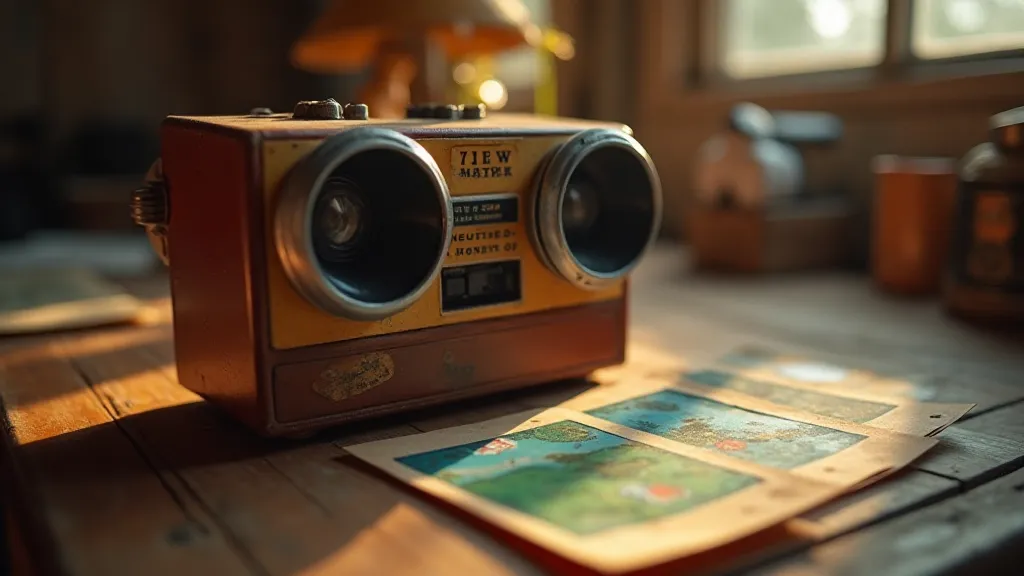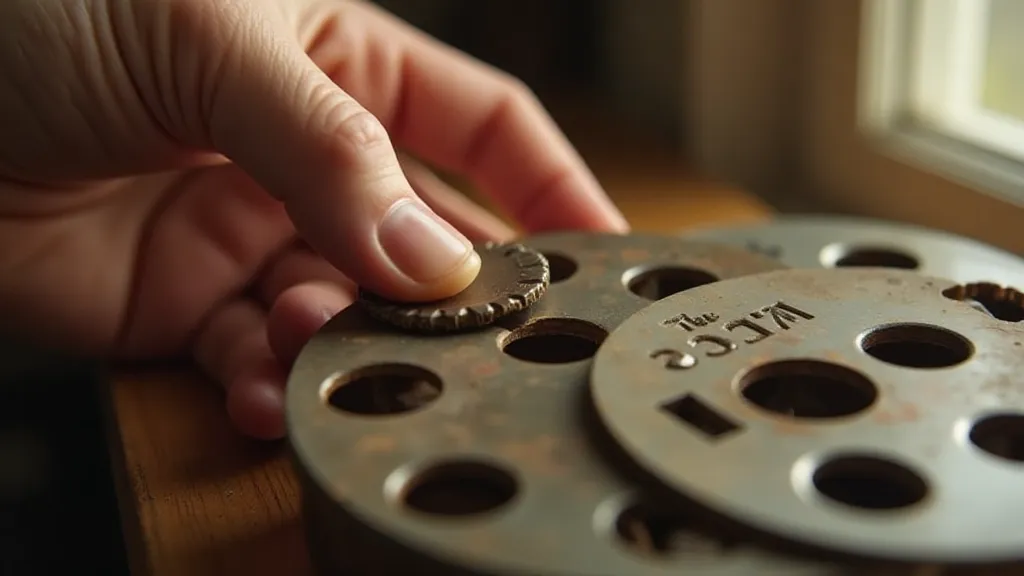The Miniature Atlas: Exploring Architectural Styles Through View-Master Travel Reels
There’s a particular scent that clings to old View-Master reels – a delicate blend of cardboard, dried glue, and a hint of nostalgia. It’s a smell that instantly transports me back to my grandfather's study, a haven filled with the comforting weight of antique furniture and the hushed reverence for forgotten treasures. He was a collector, a quiet observer of the world, and his View-Master, brimming with reels depicting faraway lands, was his portal to those places. It wasn't just a toy; it was a miniature atlas, revealing the world through a series of captivating images.
For those unfamiliar, the View-Master was a stereoscopic slide viewer, introduced by Sawyer’s View-Master Company in 1933. It used circular reels filled with pairs of images, creating a 3D effect when viewed through the viewer. Initially marketed to children, its travel reels quickly appealed to adults, offering a glimpse into destinations they might never have the opportunity to visit. But these weren't simply snapshots; they were carefully curated representations of a place, reflecting the aesthetic values and urban planning of the era they were produced.

The 1930s: Grandeur and Order
The earliest travel reels, from the 1930s and 1940s, offer a fascinating window into a world shaped by the aspirations of a burgeoning middle class and a belief in the power of progress. Cities like Paris, Rome, and London were portrayed with an almost reverent formality. Buildings weren’t just structures; they were monuments to human ingenuity and cultural heritage. Note the prevalence of Beaux-Arts architecture – grand avenues, symmetrical facades, and ornate detailing. The images suggest a desire for order and control, a visual testament to the optimism of the pre-war years. There’s an almost theatrical quality to the compositions, highlighting the beauty and imposing scale of the buildings. They wanted to convey a sense of permanence, of enduring strength, which contrasted with the economic uncertainty of the time.
Consider the "Rome, Italy" reels. The Colosseum isn’t presented as a ruin, but rather as a testament to the might of the Roman Empire, a source of national pride. The Vatican, similarly, is depicted with an emphasis on its grandeur and spiritual significance. These images weren’t intended to be documentary in the modern sense; they were crafted to inspire awe and evoke a feeling of connection to a shared cultural heritage.
The Post-War Era: Modernism and the American Dream
The 1950s and 1960s brought a shift in architectural aesthetics, reflected in the View-Master reels. The rise of Modernism – with its emphasis on clean lines, functional design, and expansive glass – began to dominate the visual landscape. Cities were portrayed with a sense of dynamism and optimism. New skyscrapers pierced the skyline, symbols of economic prosperity and technological advancement. The “New York City” reels of this era are particularly striking, showcasing the iconic architecture of the time: the Chrysler Building, the Empire State Building, and the early designs of the World Trade Center.
There's a deliberate absence of the more crowded, “lived-in” aspects of urban life. The images often feature wide, empty streets and perfectly framed perspectives, reinforcing the idealized vision of the American Dream – a life of comfort, convenience, and upward mobility. The perspective shifts from the grandeur of historic landmarks to the promise of a modern, technologically advanced future.
Beyond the Familiar: Exploring Less-Known Destinations
While the reels often focused on Europe and major American cities, the later years saw an expansion of destinations. The “Japan” reels, for instance, offer a unique perspective on a nation undergoing rapid modernization. Ancient temples and traditional gardens are juxtaposed with scenes of bustling cityscapes and industrial development, showcasing the delicate balance between preserving cultural heritage and embracing progress. The color palettes in these later reels often become more vibrant and saturated, reflecting the improvements in printing technology.

The Value of Preservation and the Collector’s Eye
The value of these vintage View-Master reels extends beyond their monetary worth. They’s tangible links to a bygone era, capturing not only the appearance of places but also the attitudes and aspirations of the people who created and consumed them. Many early reels are becoming increasingly rare, their condition directly impacting their value. Reels in excellent condition, with vibrant colors and minimal wear, command a premium. Original packaging and accompanying viewers also contribute to the overall value.
The restoration of vintage View-Master reels is a delicate process. Cleaning them too aggressively can damage the delicate images. However, careful handling and proper storage can help to preserve these fragile artifacts for future generations. The joy of collecting isn't just about acquiring these pieces of history; it’s about the ongoing discovery, the shared passion with fellow enthusiasts, and the opportunity to connect with the past in a tangible way.
A Legacy in Miniature
My grandfather's View-Master isn’t just a childhood memory; it’s a portal to a world viewed through a particular lens – a lens that captures the beauty, the optimism, and the enduring appeal of different eras. The miniature atlas within those cardboard reels offers a profound appreciation for the craftsmanship and artistry that shaped our world, reminding us that even the most ordinary objects can hold extraordinary stories.






